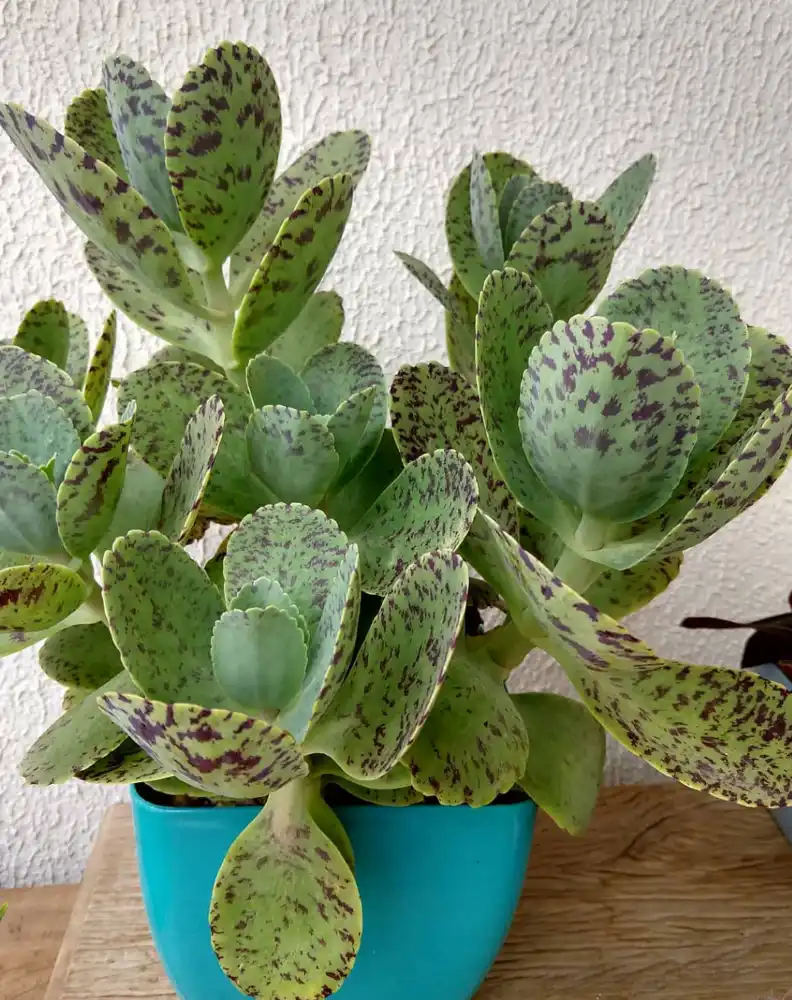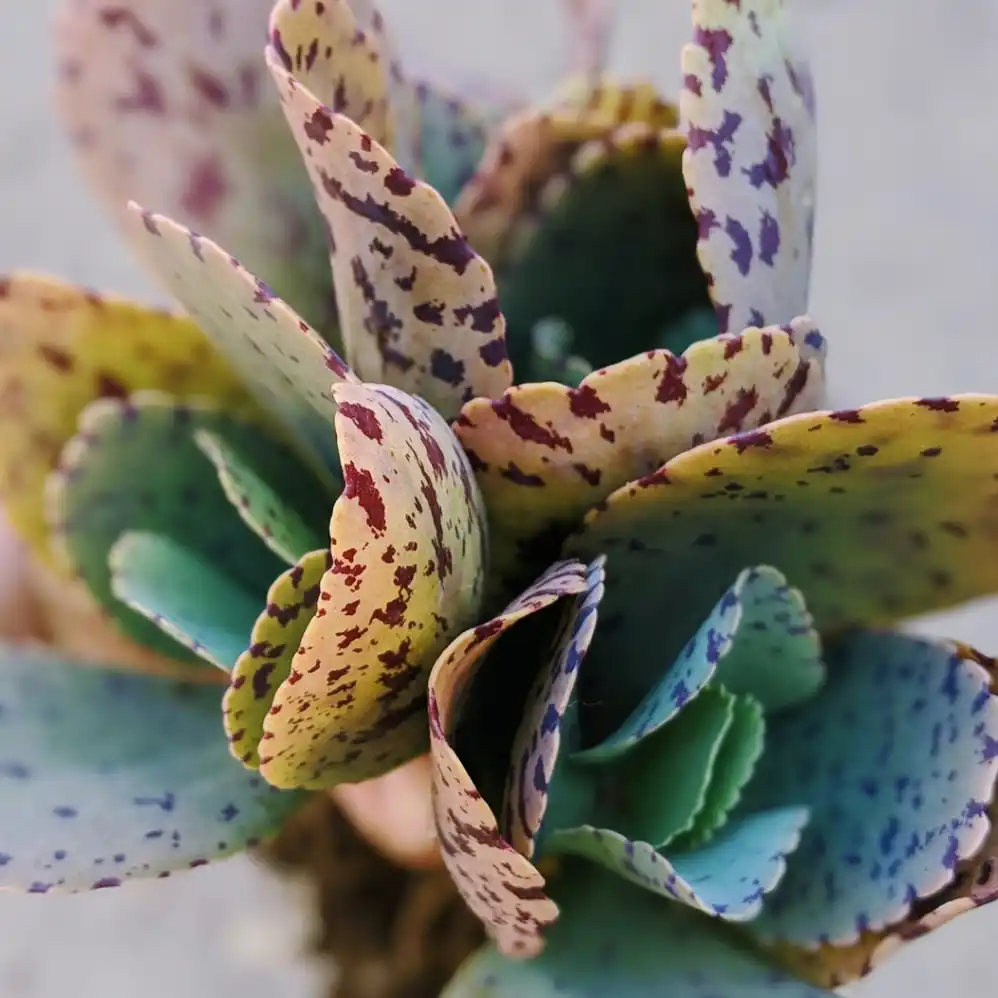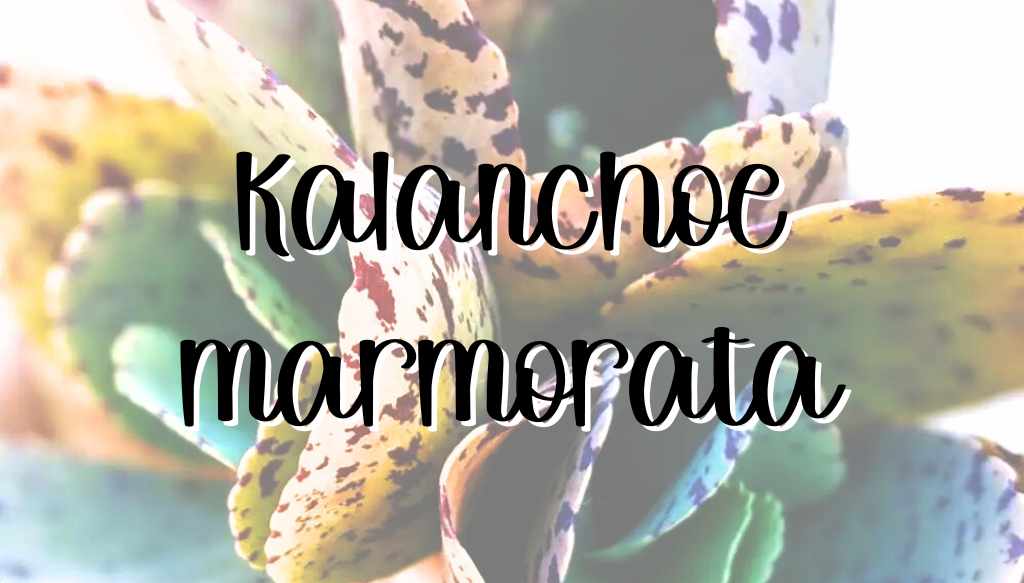If you’re a succulent enthusiast or just starting out, Kalanchoe marmorata, commonly known as the ‘Penwiper Plant’, is a fascinating and easy-to-care-for addition to your collection. In this comprehensive guide, we’ll cover everything you need to know to grow and care for this unique plant.
Dig in!

Natural Habitat and Common Names
Kalanchoe marmorata is native to the rocky slopes and grasslands of East Africa, specifically Zambia and Zimbabwe. Aside from the ‘Penwiper Plant’, it’s also known as the ‘Marbled Kalanchoe’.
Unique Adaptations
Kalanchoe marmorata boasts unique marbled markings on its leaves, which help it blend into its natural surroundings. Additionally, it’s able to store water in its thick leaves to survive extended periods of drought as with all other succulent species.
Differentiating Kalanchoe marmorata ‘Penwiper Plant’ from Other Succulents
What sets Kalanchoe marmorata ‘Penwiper Plant’ apart from other succulents is its distinct deep reddish marbling pattern and scalloped leaf edges. These features make it easily distinguishable from other Kalanchoe species.

Physical Appearance and Growth
Height
Kalanchoe marmorata ‘Penwiper Plant’ grows up to 18 inches (45 cm) tall, with an equal spread. Its leaves are large, oval-shaped, and have a powdery, silver-green hue with dark, irregular reddish marbling. It is really a standout plant in any garden or plant collection.
Flowers
Kalanchoe marmorata ‘Penwiper Plant’ produces clusters of tubular, pale pink to lavender flowers. These blooms hang from arching stems, adding a touch of elegance to its appearance.
Blooming
Kalanchoe marmorata ‘Penwiper Plant’ typically blooms during late winter or early spring. The blooming process is triggered by a combination of cooler temperatures and shorter daylight hours.
Growth Rate and Season
Kalanchoe marmorata ‘Penwiper Plant’ has a moderate growth rate and actively grows during the spring and summer months.
Light Requirements and Cold Hardiness
Kalanchoe marmorata ‘Penwiper Plant’ thrives in bright, indirect light and can tolerate direct sunlight for a few hours each day. It’s cold hardy down to 30°F (-1°C) and should be protected from frost.
Plant Care
Watering
As with most succulents, Kalanchoe marmorata ‘Penwiper Plant’ prefers a well-draining soil mix and should be watered thoroughly when the top 1-2 inches of soil are dry. Take care not to overwater, as this can lead to root rot.
When you’re rooting or transplanting your succulents and cacti, use SUPERthrive to help reduce the chance of transplant shock and grow a strong root system.
Temperature
Kalanchoe marmorata ‘Penwiper Plant’ can tolerate temperatures as low as 30°F (-1°C) but will thrive in warmer conditions (60-85°F or 15-29°C). Protect your plant from frost and extreme temperature fluctuations. Cooler temperatures really bring out its beautiful stress colors though.
Fertilization
Feed Kalanchoe marmorata ‘Penwiper Plant’ with a balanced, water-soluble fertilizer diluted to half strength every 4-6 weeks during the growing season. Personally, I don’t fertilize any of my Kalanchoe at all since they’re naturally so prolific.

Succulent fertilizer available to purchase on Etsy.
Propagation and Pruning
Kalanchoe marmorata ‘Penwiper Plant’ can be propagated through leaf or stem cuttings. Prune your plant as needed to maintain its shape and encourage branching.
Common Problems and Pests
Overwatering is the most common issue with Kalanchoe marmorata ‘Penwiper Plant’. Pests such as mealybugs, spider mites, and scale insects can also be a problem. Keep an eye out for signs of infestation and treat promptly. I usually have to treat mine for mealy bugs at least a couple of times a year. For some reason they’re just drawn to this plant.
Fix the pest problem on your succulents and cacti with these popular insecticides.
Indoor Growing and Toxicity
Kalanchoe marmorata ‘Penwiper Plant’ can be grown indoors near a bright window. It’s worth noting that Kalanchoe in general are toxic to cats, dogs, and people if ingested, so keep them out of reach of curious pets and children.
Dormancy
Kalanchoe marmorata ‘Penwiper Plant’ enters a period of dormancy during the winter months. Reduce watering and withhold fertilizer during this time. You’ll know it is entering dormancy once it starts to become super colorful as the anthocyanins give the leaves a natural blush.
The Kalanchoe marmorata, or ‘Penwiper Plant’, is a captivating succulent with its unique marbled leaves and charming flowers. With proper care, it can be a rewarding addition to your indoor or outdoor garden. By following this comprehensive guide, you’ll be well on your way to mastering the art of Penwiper Plant care.

